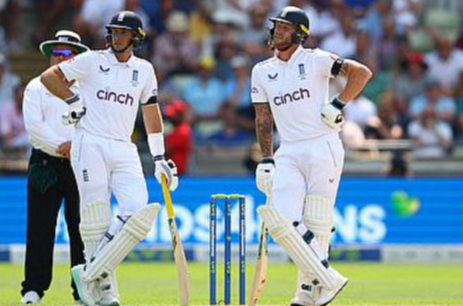The Evolution of Cricket: From Village Games to Global Sport
Cricket’s transformation from a simple village pastime to a global phenomenon reveals much about societal shifts and cultural exchanges. Initially characterized by informal play, the establishment of standardized rules marked a significant turning point. As the sport spread across continents, it adapted to diverse cultural contexts, leading to various formats. This evolution raises intriguing questions about cricket’s future and its ability to maintain relevance in an ever-changing world. What factors will shape the next chapter of this storied game?
The Origins of Cricket: a Glimpse Into Village Life
Cricket, with its rich history, can trace its origins back to the rural landscapes of England in the 16th century, where it emerged as a pastime among village communities.
Rooted in local traditions, the game fostered a spirit of camaraderie, often played using makeshift equipment like wooden bats and stone wickets. Informal matches became a staple at social gatherings, igniting local rivalries and encouraging community involvement.
Each village developed its unique customs, reflecting the character of its inhabitants. As players gathered on green fields, they not only honed their skills but also strengthened bonds through friendly competition.
This early version of cricket embodied the essence of village life, creating a vibrant culture that would eventually pave the way for the sport’s evolution.
Read more: Understanding Cricket Rules: A Beginner’s Guide to the Game
The Birth of Formal Rules and Early Competitions
As the popularity of the game grew, the need for standardized rules became evident, prompting early players and enthusiasts to formalize regulations that would govern play.
The establishment of formal regulations in the 18th century marked a significant turning point in cricket’s evolution. These rules not only provided structure but also enhanced the integrity of the game, fostering a sense of fairness among players.
Early tournaments began to emerge, showcasing teams and elevating cricket from informal gatherings to organized competitions. With these developments, cricket transformed into a structured sport, attracting larger audiences and inspiring a sense of community.
This period laid the groundwork for future innovations and the eventual global proliferation of cricket, setting the stage for its enduring legacy.
The Impact of Colonialism on Cricket’s Global Spread
While the emergence of formal rules and competitions laid the foundation for cricket’s development, it was the forces of colonialism that significantly amplified its global reach. The colonial influence facilitated cultural integration, as British settlers introduced the game to various regions, leaving an imperial legacy that shaped local identities.
Cricket became a tool for cricket diplomacy, fostering relationships between colonizers and colonized, while also reflecting social stratification within these societies. This interaction spurred game adaptation, allowing cricket to resonate with diverse communities.
Through sports nationalism, local identities were forged, sometimes in opposition to colonial powers. Post-colonial perspectives reveal cricket’s role in identity formation, emphasizing its importance as a vehicle for global outreach and unity among formerly colonized nations.
The Rise of Test Cricket: A New Era of Competition
Emerging in the late 19th century, Test cricket signified a transformative phase in the sport, elevating it to a level of competition that demanded not only skill but also strategic depth and endurance.
The format introduced a new test match intensity, where players faced extended battles against both their opponents and the elements.
Rivalries evolved, fostering a sense of national pride and historical significance; encounters between established cricketing nations became spectacles of unparalleled excitement.
As teams vied for supremacy, the game transcended mere entertainment, becoming a platform for showcasing tactical ingenuity and mental fortitude.
This era not only solidified cricket’s status as a premier sport but also laid the groundwork for complex narratives that continue to shape its identity today.
The Introduction of Limited Overs: One Day Internationals
The advent of One Day Internationals (ODIs) represented a pivotal shift in the cricketing landscape, bringing the excitement of limited overs to a broader audience.
Introduced in the early 1970s, this format allowed matches to be completed within a single day, catering to fans seeking a faster-paced alternative to traditional Test cricket.
ODIs revolutionized the game, blending strategy and entertainment, as teams now had to adapt their tactics for a finite number of overs.
This shift not only attracted new spectators but also elevated cricket’s global profile, as nations competed for supremacy in an engaging format.
The introduction of limited overs created a dynamic interplay between skills and suspense, ultimately reshaping cricket formats and ensuring the sport’s continued evolution.
The T20 Revolution: A Game Changer for Cricket
With the success of One Day Internationals paving the way for innovation in cricket, the introduction of Twenty20 (T20) cricket marked a revolutionary milestone in the sport’s evolution.
This format transformed T20 strategy, prioritizing aggressive batting and dynamic bowling, resulting in thrilling matches that captivated audiences. Enhanced fan engagement became key, with global tournaments like the IPL attracting diverse spectators.
The franchise dynamics reshaped team structures, promoting player fitness and adaptability. Additionally, the cultural impact of T20 cricket spurred youth development, inspiring aspiring cricketers worldwide.
Sponsorship deals surged, and merchandising trends flourished, highlighting the format’s commercial viability. Overall, T20 cricket not only diversified match formats but also redefined cricket’s position within the global sporting landscape.
The Role of Technology in Modern Cricket
In modern cricket, technology has transformed the landscape of the game, enhancing both player performance and viewer experience.
Instant replay systems have revolutionized decision-making, while data analytics provide teams with critical insights to refine strategies.
Additionally, player tracking technologies have emerged, offering unprecedented metrics that influence training and gameplay tactics.
Instant Replay Systems
Instant replay systems have revolutionized the way decisions are made in modern cricket, enhancing the accuracy and fairness of the game.
With technology advancements, these systems provide umpires with crucial support, allowing them to review contentious calls in real-time.
The introduction of instant replay has not only improved decision making but has also increased transparency, reassuring players and fans alike.
This technological integration fosters greater fan engagement, as spectators are often privy to the same footage, creating a shared experience during critical moments.
By minimizing human error, instant replay systems contribute significantly to the integrity of cricket, ensuring that the outcome of matches reflects true performance rather than mistakes.
Thus, they play an essential role in the evolution of the sport.
Data Analytics Impact
The integration of technology in cricket has extended beyond instant replay systems to encompass the transformative impact of data analytics.
This evolution leverages data visualization and performance metrics to enhance match analysis and inform game strategy. Predictive analytics now plays a pivotal role in interpreting player statistics, enabling teams to anticipate opponents’ moves and refine their tactics.
Moreover, the emphasis on team dynamics has shifted, as coaches and analysts utilize sophisticated tools to dissect gameplay, leading to improved decision-making.
Fan engagement has also surged, with access to real-time data enriching the viewing experience.
Ultimately, the infusion of data analytics into cricket has revolutionized how the sport is played and perceived, fostering a deeper connection between teams and their audiences.
Player Tracking Technologies
Player tracking technologies have emerged as a critical component in modern cricket, revolutionizing how performance is analyzed and strategies are formulated.
These innovations utilize tracking devices and wearable technology to gather data on player performance, facilitating real-time analytics and athlete monitoring. By capturing performance metrics, teams can better understand individual capabilities and weaknesses, leading to enhanced game strategy.
Data visualization tools transform raw statistics into comprehensible insights, allowing coaches to make informed decisions on player selection and tactical adjustments.
As the sport evolves, the integration of these technologies not only enhances competitive advantage but also fosters a deeper understanding of the game, empowering athletes to reach new heights in their performance.
Cricketing Nations: The Growth of International Competitions
The evolution of international cricket has been significantly shaped by the rise of Test matches and the proliferation of T20 leagues.
Test cricket, often seen as the pinnacle of the sport, has fostered deep rivalries and showcased the endurance of teams, while T20 leagues have revolutionized the game by attracting global audiences and enhancing player mobility.
This duality not only highlights the diverse formats within cricket but also underscores the evolving dynamics among cricketing nations in the international arena.
Rise of Test Matches
As cricket evolved from its informal origins into a structured sport, the rise of Test matches marked a significant turning point in the development of international competitions.
Emerging in the late 19th century, Test match formats established a framework for nations to showcase their cricketing prowess. Historical rivalries intensified, captivating fans and boosting engagement, as teams vied for supremacy in iconic match venues.
The intricate series dynamics allowed for strategic depth, with player statistics becoming crucial in assessing team strengths and weaknesses. Cultural significance grew as record milestones were celebrated globally, influencing national pride.
The competitive landscape also contributed to the establishment of global rankings, encapsulating the ongoing evolution of strategies and the spirit of the game, resonating with freedom-loving enthusiasts worldwide.
Impact of T20 Leagues
Rapidly transforming the landscape of cricket, T20 leagues have emerged as a pivotal force in enhancing international competition among cricketing nations.
These leagues foster T20 fan engagement through electrifying matches that attract diverse audiences.
T20 player development has gained momentum, as emerging talents can showcase their skills alongside seasoned professionals.
The financial impact of T20 leagues is profound, generating substantial revenue that reshapes national cricket boards.
Moreover, T20’s cultural influence is evident in its ability to unite cricket fans globally, transcending geographic boundaries.
Innovative T20 marketing strategies amplify the spectator experience, making matches more accessible and engaging.
Finally, T20 leagues inspire youth involvement, encouraging a new generation to embrace cricket, thus ensuring its growth and sustainability in the global arena.
The Influence of Media and Sponsorship on Cricket’s Popularity
How has the intersection of media and sponsorship transformed cricket into a global phenomenon?
The evolution of media coverage and sponsorship deals has significantly amplified cricket’s reach and appeal. Advertising strategies have pivoted towards engaging fans through digital platforms, enhancing global outreach and community involvement.
Major tournaments have attracted lucrative television rights, resulting in substantial financial growth for leagues and teams alike. Brand partnerships have further fueled merchandise sales, allowing fans to connect with their favorite teams on a deeper level.
This synergy between media and sponsorship has not only elevated the sport’s status but has also fostered an environment where fan engagement thrives, making cricket a prominent fixture on the world stage, attracting diverse audiences and fostering a vibrant cricket culture.
The Future of Cricket: Trends and Innovations Ahead
While traditional formats of cricket have long captured the hearts of fans, emerging trends and innovations are poised to reshape the landscape of the sport. A growing emphasis on sustainability initiatives is evident, with many leagues adopting eco-friendly practices to minimize their environmental impact. These efforts not only appeal to conscious consumers but also enhance cricket’s reputation as a forward-thinking sport.
Furthermore, youth engagement strategies are becoming increasingly critical, as governing bodies recognize the importance of attracting younger audiences. Innovative formats, such as shorter matches and interactive digital platforms, are designed to captivate the next generation.
Conclusion
As cricket continues its journey from a quaint village game to a global titan, it resembles a sprawling tree, its roots deep in tradition while its branches stretch towards innovation. Each format, like distinct leaves, captures the essence of diverse cultures and evolving technologies. The sun of media and sponsorship nurtures this growth, illuminating the path ahead. Ultimately, the sport stands poised at the crossroads of heritage and modernity, ready to embrace new horizons while honoring its rich past.





